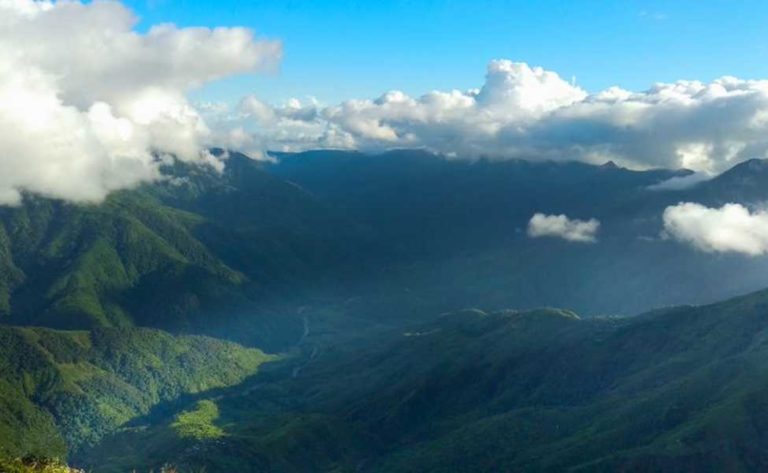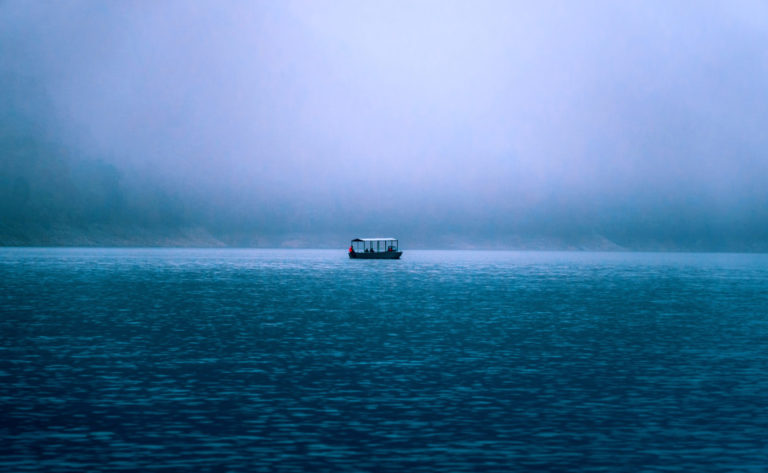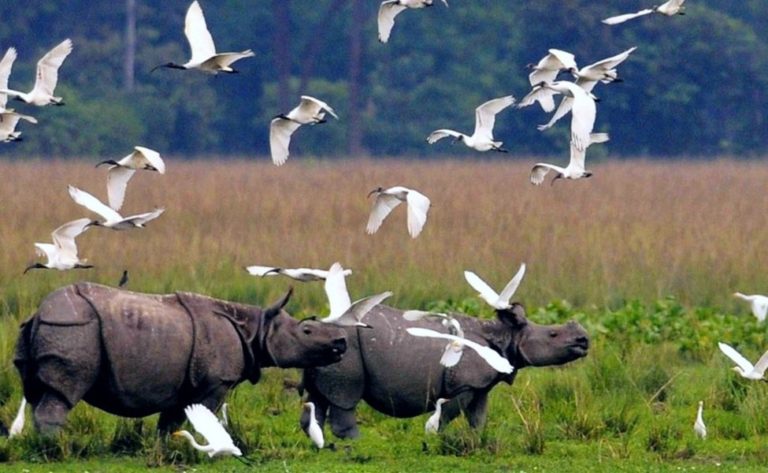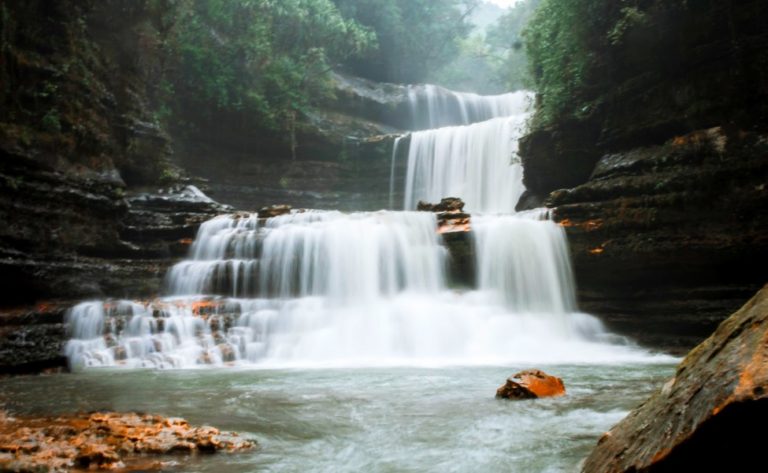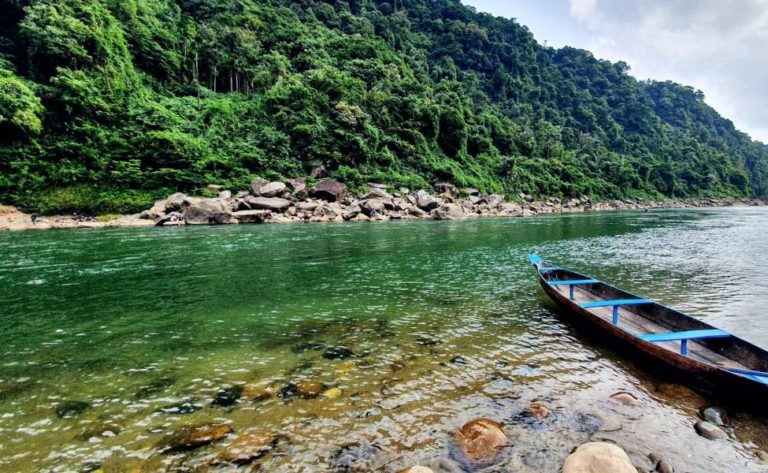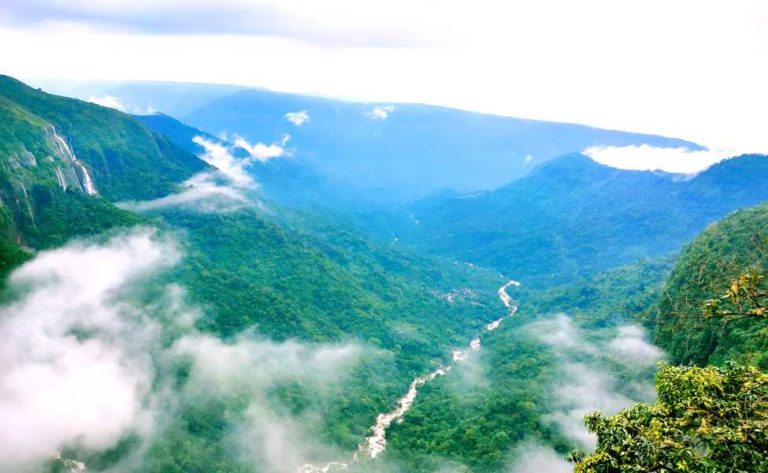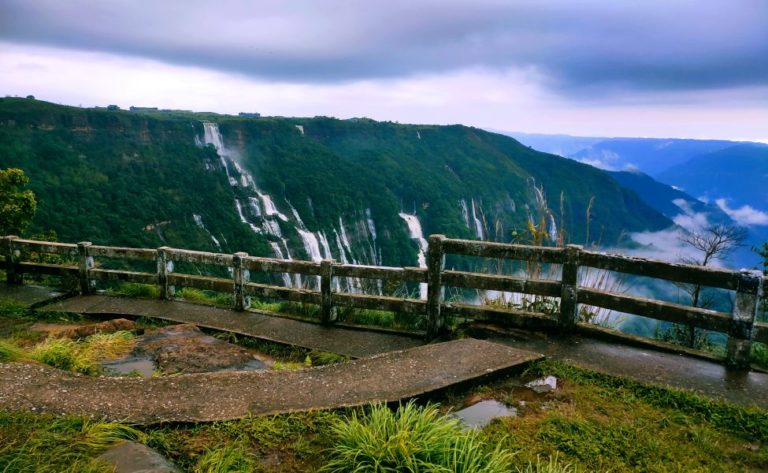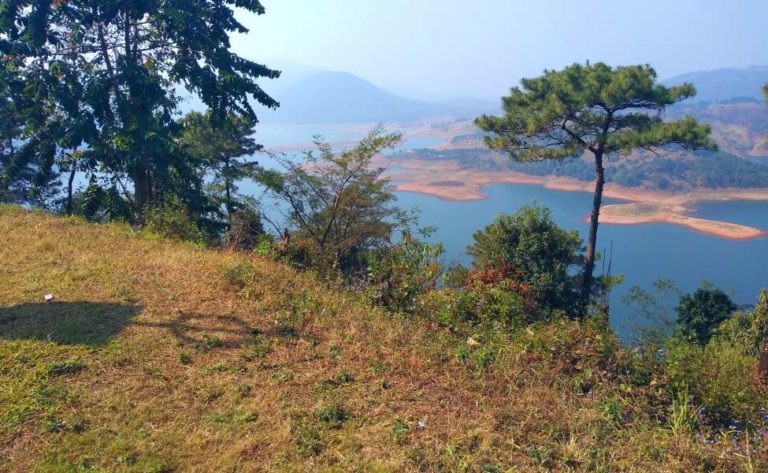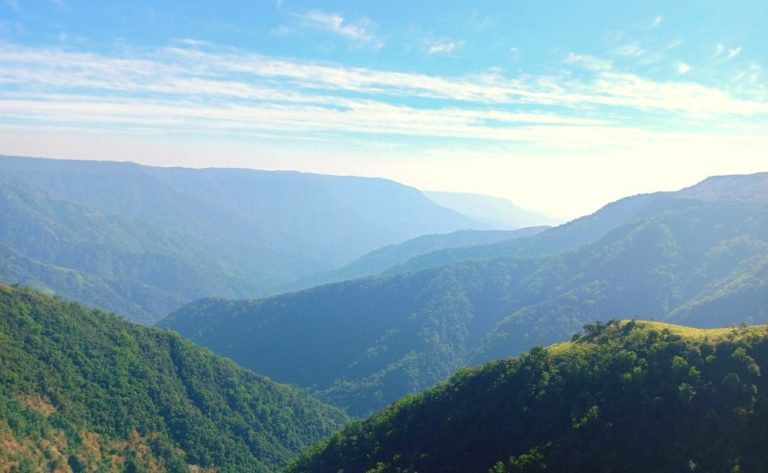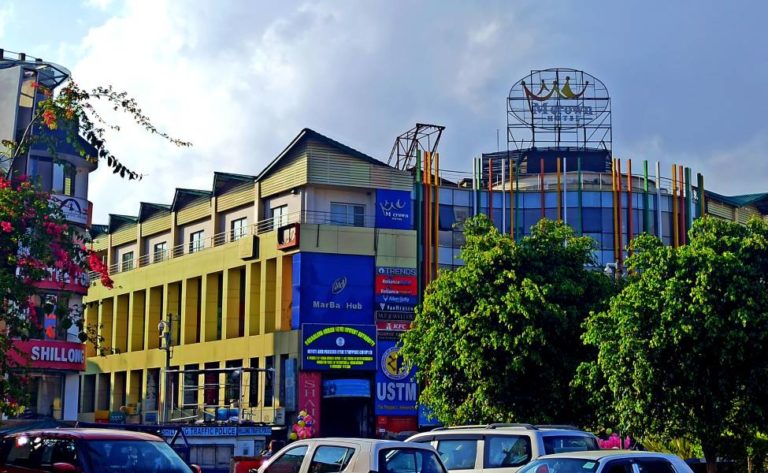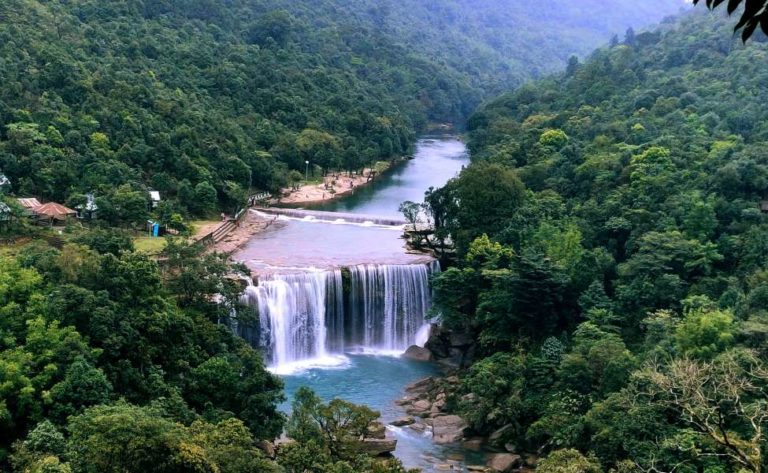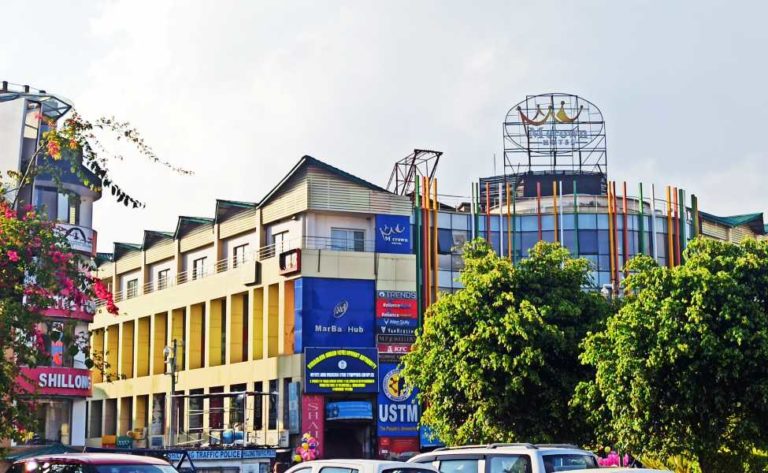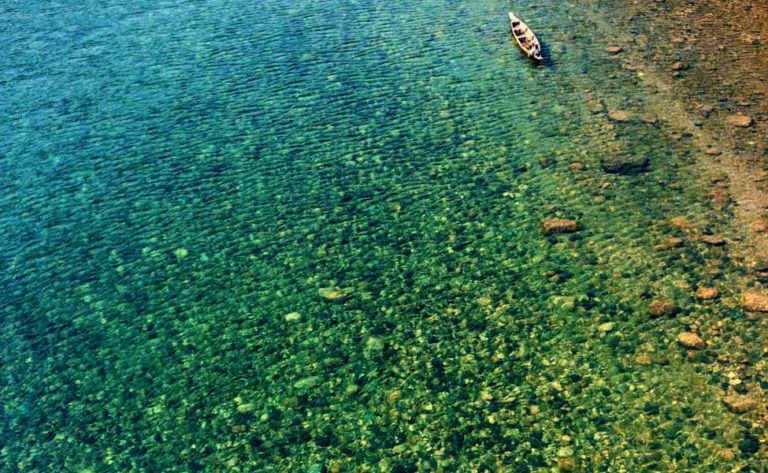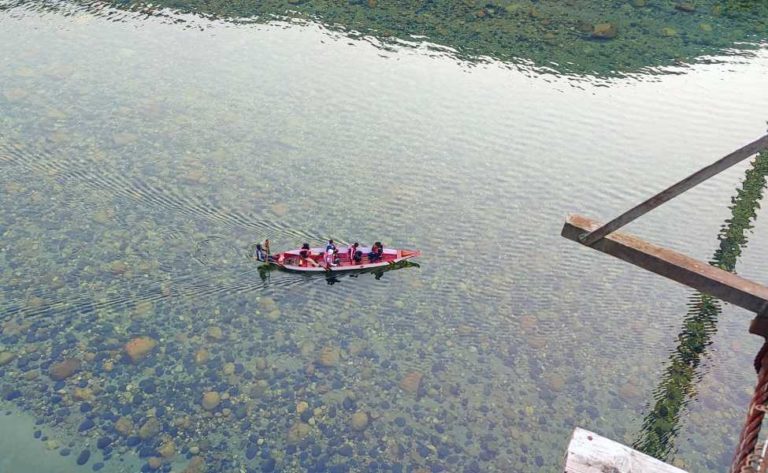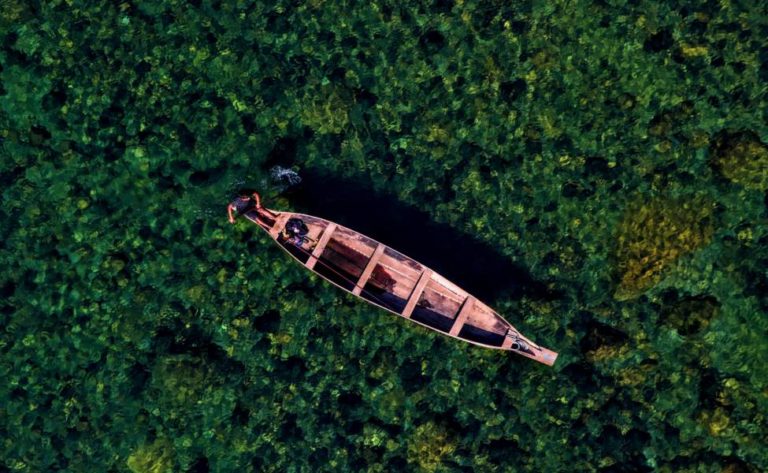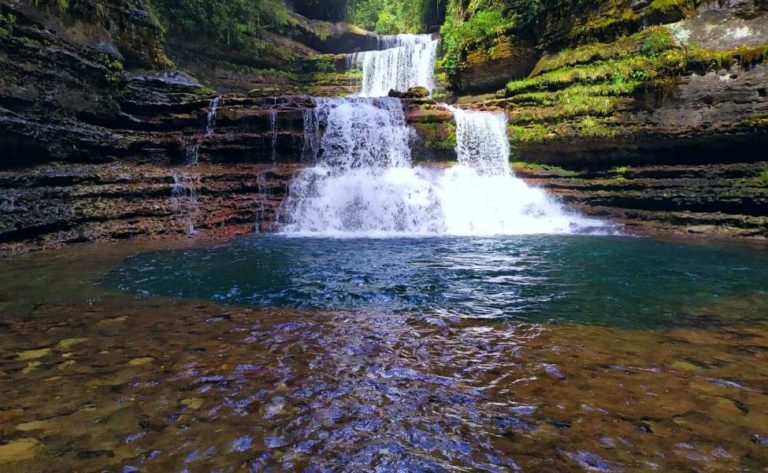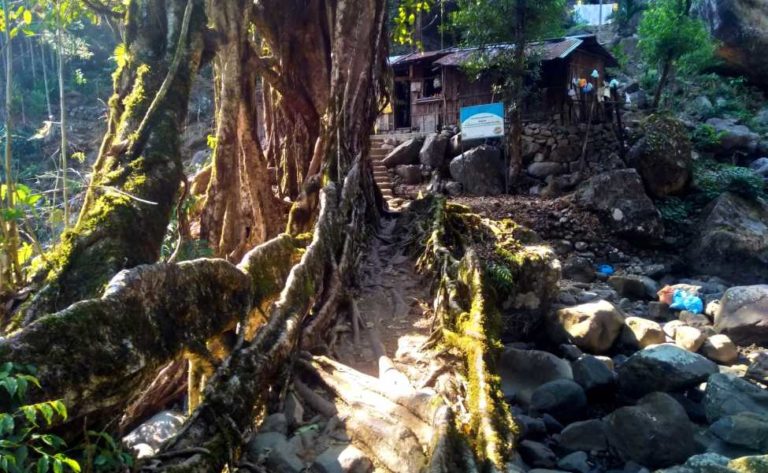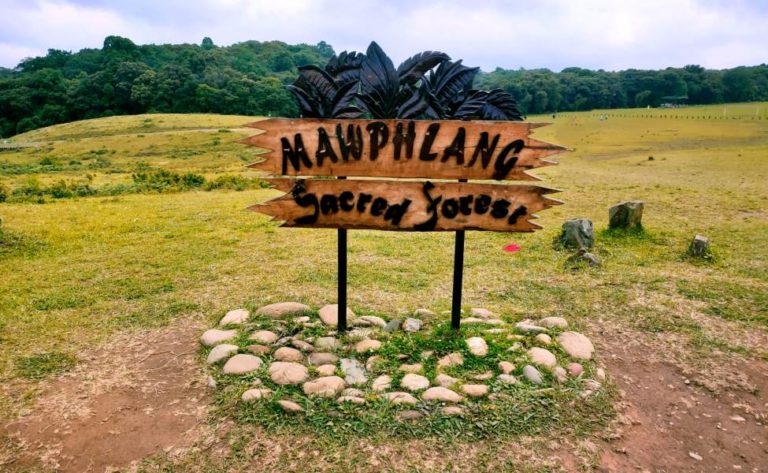
Kaziranga Tourism: An Ideal Travel Guide
Kaziranga Tourism: An Ideal Travel Guide
The largest number of one-horned rhinos in the world may be found at Kaziranga National Park, one of India’s national treasures for its flora and biodiversity. Kaziranga National Park is almost entirely covered in lush foliage and is situated on the floodplains of the powerful river Brahmaputra. Tall elephant grass, marshes, and tall tropical broadleaf forests are features of this national park, which receives a tonne of rain every year, sometimes even exceeding dangerous levels. Various bird species can be found in this park. The great Indian hornbill is only one of the noteworthy bird families that may be observed here, along with many other species of birds. This area is a common stopover for migrating birds that travel south from the north. During the peak visitors season, safaris can be taken at any time of day or night. Among visitors, wildlife writers, and enthusiasts, elephant safaris are also particularly well-liked. For safety reasons, certain activities, like trekking, are not allowed in this area. This national park takes good custody to ensure that travel and preservation of the environment coexist together.
A variety of climates can be experienced due to the location of the Kaziranga National Park. The souls of people are captured by the warmth of the sun, the blossoming of the flowers, the chirping of the birds, the whiteness of the landscape, and the barren trees of the winter. Assamese tribal settlements, whose residents reside there and further enhance the splendour of the area, are located all around this incredible ground of animals. One of everyone’s favourite travel locations, this location has also been designated a global historic site.
What Makes Kaziranga so Famous?
The largest home of the great one-horned rhinoceros is Kaziranga National Park in Assam. It is the largest biodiversity gem in all of India and a UNESCO World Heritage Site. Most Indians have a bucket list item that includes visiting Kaziranga National Park. The park, which spans Assam’s Nagaon and Golaghat districts, is situated along the banks of the Brahmaputra River.
The biggest number of wild Indian one-horned rhinoceroses is found there, making it a popular tourist spot and preservation region. These rhinos are on the verge of extinction. The Asian Elephant, Asiatic Water Buffalo, and eastern variant of the Swamp Deer are three additional large herbivores that have significant populations in the park. The world’s largest tiger density is found in Kaziranga, which was designated a Tiger Reserve in 2006. Birdlife International has designated Kaziranga as an Important Bird Area in recognition of its work in avian species preservation. Additionally, the land is home to a sizable count of other endangered species, such as tigers, elephants, wild water buffalo, and bears, as well as aquatic creatures like Ganges River dolphins. For migratory birds, it is a crucial area. Nearly two thirds of the park’s acreage is made up of wet alluvial grasslands that are periodically flooded and burned to keep them healthy. Assemblages of habitats are created by these natural processes, which also give rise to a wide variety of predator/prey pairings. A Management Plan that has received legal approval is used to govern the control of the location, which is carried out by the Assam Forest Department. The property is currently considered to be among the best protected and preservation states in all of India.
Best Time to Visit Kaziranga
Depending on your choices for the lovely summer, you can choose whether or not to travel. When you should depart for your chosen vacation destination will be greatly influenced by the weather. You cannot choose the ideal time to travel until you have carefully considered the benefits and drawbacks of each season.
Summer (February to May) : Although this time of year is generally hot and muggy and not particularly desirable for people, it might still be a fantastic time to go if you want to avoid the crowds and get the best hotel discounts.
Winter (November-February) : All people can enjoy the very calm and beautiful weather throughout this season. The soul will be mesmerised by the incredible coolness and gorgeous environment all around you. In reality, Individuals and visitors will have a lifetime experience here at this moment. Therefore, the winter is the greatest time to come and arrive at Kaziranga National Park.
How to Reach Kaziranga
The next three means of transportation offer straightforward access to Kaziranga.
By Train
The Furkating station in the 80 km to the east is the closest railhead to Kaziranga National Park. All of the main Indian cities are connected to it by train. Even some visitors choose to go by train to Guwahati before driving on to Kaziranga.
By Air
Kaziranga National Park is located 96 kilometres from Jorhat town, where the closest airport is located. From Kolkata, one can fly to Jorhat. However, the best choice is to fly to Guwahati, which is located 225 kilometres to the west of Kaziranga National Park. With practically all of India’s main cities, Guwahati enjoys excellent air connectivity.
By Road
Due to the presence of NH 37, Kaziranga has several connections by road to both major towns within the nation and around the globe. On the roadways, a number of commuter and charter buses operate.
History, Language, and People of Kaziranga
History
The big one-horned rhinos were the reason Lord Curzon, the viceroy of India at the time, and his wife Mary Curzon went on a trip there in 1904. They were disappointed that they were unable to view any rhinos because the majority of them had been stolen. The moment she made the decision, Mary Curzon started taking action to protect rhinos. As a result of her inspiration, Kaziranga was designated a reserve forest in June 1905 and rhinos were eventually saved. The Kaziranga National Park currently protects two-thirds of the world’s population of great Indian one-horned rhinos. Kaziranga was afterwards elevated to the status of national park. The Kaziranga Tiger Reserve, which has the greatest number of tigers in this area, was established in the year 2006.
Language
Kaziranga National Park is home to a large English and Assamese speaking population. The Sino-Tibetian language family includes the Karbi language, which is spoken by the Karbi people of Assam. Many people think the name Kaziranga comes from the Karbi language, where “kazi” means “goat” and “ranga” means crimson. The locals refer to the deer that are frequently seen in the area as this.
People
The activities that take place in Kaziranga National Park provide a living for the great majority of the area’s residents. Some work specifically in the tourism industry, while others do supplementary work. The locals typically reside in the villages around the park because there are no settlements inside its boundaries. Around the park, there are 39 villages, and due to the tremendous job potential in tourism, new communities are being built. People in the park seem to be concerned for animals that live there since they frequently assist the park’s management in ensuring that the animals may travel to safer areas when the park floods during the monsoon.
Travel Guides
Top Tourist Attractions in Kaziranga
Following are the worth visiting attractions of Kaziranga making it one of the best tourist destinations.
Hollongapar Gibbon Sanctuary
As one of Kaziranga’s top tourist destinations, Hollongapar Gibbon Sanctuary is a must-see. Wandering peacefully among the evergreen forests, emerald tea gardens, picturesque villages, and breathtaking vistas of the Patkai mountain range is a delightful experience that will uplift your mood. Hoolock Gibbons are the sole species of apes to be found in India, and this sanctuary bears their name. A magnificent and incredible sight, it holds about 106 Hollock Gibbons. The Dissoi Valley Reserve Forest is another magical place for those who enjoy the outdoors and wildlife, and it is also part of the Sanctuary. Your soul will be enchanted for all time by the lovely tea gardens of Murumurai, Meleng, Chenijan, Rampur, and Fesual, the calming sounds of lovely birds like Green Pigeon, Owl, Dove, Drongo, Barbet, etc, and the therapeutic effects of orchids, bamboo, cane, holong and holokh trees, as well as Ajar trees, among others.
Kaziranga National Orchid & Diversity Park
For those who enjoy the outdoors, the Kaziranga National Orchid & Diversity Park, located 2 kilometres from the Kohora zone of Kaziranga, is a soul-satisfying destination. In Kaziranga National Park, it’s one of the most well-liked tourist attractions. 600 different orchid species, gathered from all over the stunning North East, are kept there. Your camera will want to delight in photography due to the relaxing calm and stunning flowers. In the midst of nature, you’ll experience pleasant vibes here. In the event that this entices you to come here, this park also has a museum dedicated to rice, a beautiful fruit garden, and a variety of plants and fish species. In this stunning piece of nature, the park’s canes and several varieties of bamboo are waiting as well for your footsteps.
Ethnic Village (Karbi Anglong District)
Welcome to the realm of the Karbis, where your spirit can soar freely amid the luxuriant vegetation, undulating hills, deep forests, and tranquil rivers and waterfalls. Karbi Anglong, which is close to Kaziranga National Park, is the finest spot to go if you want to dance in Assam to the rhythm of nature and the lovely winds. The distance from the Guwahati-Kaziranga Highway’s Nellie Junction is 35 kilometres. One of the nicest things to do when visiting Kaziranga is to walk a description of the routes to Singhason, the highest peak in the area. Karbi Anglong is the most pretty tourist attraction in Kaziranga due to its tribal culture, hills and plains, diversity of flora and wildlife, and picturesque rivers. Only 4 months are spent in operation.
Hathikuli Tea Estate
Owned by James Finley of Scotland, the Hathikuli Tea Estate is a centralised location where you may retreat into peace and take in the sounds of nature. If you visit this tea farm as part of your Kaziranga Tour, it will be among your favourite travel memories from Assam. Elephant-friendly location is what the word “hathikuli” refers to. Therefore, seeing regal elephants in the middle of the wilderness would be a lovely sight. To entice your flavour sensation, explore a variety of tea flavours here, including organic green tea with black pepper. The greatest spots to visit in Kaziranga are the tea estates of Bochapari, Behora, and Methoni, aside from Hathikuli. Additionally, these Kaziranga tea estates provide overnight stays, if you would like to enjoy the finest of Assam tourism, and living amid the lovely vegetation and picturesque panoramas of tea gardens and lovely adjacent villages would be a great experience.
Agoratoli Range
Due to its proximity to the Kaziranga National Park’s main entrance that is 25 kilometres away; the Agoratoli Range is regarded as the park’s greatest area as a whole. Here is where the majority of the woodland fauna is found. All tourists are drawn to this location by the emerald mountains and breathtaking scenery, which hypnotises them into coming to explore this range as well as two additional ranges in Kaziranga National Park. The wetlands are home to a great number of birds, including eagles, geese, pelicans, waders, and pelicans.
Bagori Range
A site or region that is distant from the flurry of activity, as opposed to the Kohora Range, is the Bagori Range, which is located 15 kilometres from the main core Kohora Range. At Bagori, there is a gate that leads into the Western Zone of Kaziranga Park. The beginning of this area is marked by the Bagori Tourism Office, from which visitors can embark on Jeep and Elephant Safari excursions to the renowned Kaziranga National Park. The western region is the highly popular tourist region in Kaziranga for an elephant safari since the area’s geography allows visitors to see one-horned rhinos up close. Private companies run the elephant rides on the Western Range. Due to the absence of proper preparation of the elephants, foreign visitors are not permitted here. In season, that is from November to April, the Elephant Safari is only run in shifts throughout the morning. Thus, the Kaziranga National Park’s range is the ideal range for seeing wildlife and raptors.
Kohora Range
In essence, the Kohora Range in the Kaziranga National Park is a small town located in the Golaghat region of Assam. Since this is where the majority of shops and hotels are located, it serves as the main gateway for guests entering the park. One can have a life-changing Safari with a Jeep and Elephant experience right here.
Kaziranga Fauna
The numerous unique species of wildlife that call the vast open forest of Kaziranga home draw millions of travellers here each year for safaris, making this national park one of the most popular places in India for wildlife tourism for nature lovers. The majority of this park’s land is widely approachable for safaris, making Kaziranga the ideal location to view animals unhindered. Additionally, Kaziranga provides a favourable environment for a variety of wild cat species, including Bengal tigers, leopards, jungle cats, fishing cats, and others. In addition to being a haven for avian enthusiasts and ornithologists, Kaziranga is also classified as an Important Bird Area by Wildlife International due to the abundance of species of birds that can be found there. Many migrating birds, water birds, scavengers and game birds find Kaziranga to be a suitable sanctuary due to the area’s abundance of water basins. The park is home to more than 450 different types of these lovely animals. The Asian Openbill stork, White-fronted Goose, Greater Adjutant, Ferruginous Duck, and among them are Lesser Adjutants.
Kaziranga Flora
In terms of preservation and beauty, Kaziranga is one of India’s best national parks. The Brahmaputra River floodplains are encircled by the forest of Kaziranga, which cultivates and enhances the area’s environment in a way that benefits the fauna of the park. The Kaziranga National Park’s environment is primarily enhanced by the four varieties of plants, which set this magnificent forest apart from many other Indian woods. Alluvial savanna woods, alluvial inundated grasslands, tropical moist mixed deciduous forests, and tropical semi-evergreen forests make up the majority of the Kaziranga’s vegetation. The 378 square km Kaziranga forest has a different altitude in its eastern and western regions, which accounts for the variety of plant species that can be found there. Large grassland takes up much of the park’s western side, which is at a lower elevation. The splendour of Kaziranga is its astounding variety of flowers, which include a thick layer of water lilies, lotuses, and water hyacinth. These blooms enhance the park’s beauty and give it a rustic appearance. The aquatic plant known as water hyacinth is prevalent in water bodies in the woodland and frequently fully covers them.
Kakochang Waterfalls
In close proximity to Kaziranga, Kakochang waterfall is another popular picnic and tourism destination. Additionally visible from here are the ruins of the ancient Numaligarh. A location in the Jorhat Region of Assam called Bokakhat is 13 km away from the waterfall. It is a well-known local eating-out picnic location and is located between the Kaziranga National Park and Bokakhat. The Numaligarh ruins, the Deoparbat or Deopahar ruins, and the sceneries of tea, coffee, and rubber farms are some of the well-known spots close to this cascade. It is also known as Kakojan, and it is an incredibly lovely waterfall situated among virgin and undiscovered works of nature. The Karbi Anglong district of Assam is where it is located geographically. However, Bokakhat, a small town in Assam’s Golaghat region, is conveniently located near this waterfall. You would need to hike for approximately 4 kilometres to reach the waterfall base, which is located 12 to 14 kilometres from Bokakhat.
Orang National Park
The Orang National Park, also famously known as Rajiv Gandhi Orang National Park or the mini Kaziranga National Park, is situated in the Assamese districts of Darrang and Sonitpur, around 100 kilometres away from Kaziranga National Park. The park, which is about seventy-nine sq km in size, is home to a variety of animals, including one-horned rhinos, tigers, elephants, leopards, deer, and sambars. Due to the abundance of exotic migrating birds and domestic species, the park is also well-known for bird viewing. On the northern border of the Brahmaputra River, the Orang National Park, which covers an area of 78.81 square kilometres, is located. Dhansiri River, Belsiri River, and Pachanoi River all surround the park. Due to multiple streams crossing each other, the park area transforms into flood plains during monsoon season. There are twelve wetlands inside the park created by these flood plains. Twenty-six man-made lakes provide proof that a specific community once called this area home. The Best Season to Visit Orang National Park Between November and April is the ideal time to visit Orang National Park.
Travel Advice on Kaziranga
The most important piece of advice is to always pick an elephant safari as opposed to a jeep safari if you have the option. An elephant safari will be much more beautifully unforgettable and exciting than a vehicle safari, which lacks the same sense of adventure. Aside from the jeep and elephant safaris that are offered to outsiders, you can also go on a rare and unheard-of boat safari in the eastern part of Kaziranga National Park. Aim to always remember that Assam receives significant amounts of cold weather throughout the winter if you plan to arrive at Kaziranga Park during that period. Therefore, if you intend to go on an elephant safari, schedule your departure for eventually in the day rather than early in the morning due to the heavy fog that could derail your thrilling trip. Due to the intense monsoon rains that fall during this time, the park typically remains closed from the first week of June to the first of October.
The safaris only run from 5:30 in the morning till 4 in the afternoon. Jeep Safari begins at 7:30 am, and Elephant Safari begins at 5:30 am.
Tips for Visiting Kaziranga
- If possible, arrive half an hour early for the safari in order to arrive on time.
- Go to the Mihimukh Riding Tower in the Bagori Headquarter in the western part of the forest and hold back for the elephant there after getting the all-clear for your elephant safari.
- During your elephant safari, pay close attention to the instructions the elephant mahout gives you.
- Please don’t push people to go up near wild animals or to cross designated safari paths when you are riding in the bush.
- Take binoculars, cameras, or phones with you on your excursion so you can record the stunning sights you see.
Rainfall in Kaziranga
- Due to its location in Assam’s middle Brahmaputra Valley, Kaziranga receives 250 cm of rain annually.
- Monsoon season lasts from June through September, when the weather is hot and muggy. 2,220 mm of rainfall total during this time, supposedly brought by the South West Monsoon, falls on Kaziranga National Park.
Things to do in Kaziranga
There are a lot of things to do in and around Kaziranga. Following are a few of the amazing things one must do when in Kaziranga.
Go in for Bird Watching
It provides the ideal location for seeing many bird species because of the nearby flow of the River Brahmaputra. A variety of water lagoons make up the park’s eastern range, which is a bird admirer’s heaven. One can spend hours observing the activity of the numerous birds that populate the area. Few of the species that are frequently seen in Kaziranga are pelicans, the Great Adjutant Stork, and Whistling Teal.
Check out Kaziranga National Orchid Park
About 2 kilometres from Kohora Chariali, or close to the Central Range, the national park is home to a National Orchid Park. The park is among the biggest of its kind, covering a magnificent 5.95 acres of scenery. Out of the 1314 different types of orchids in the nation, about 500 different species have been discovered at the orchid park. 132 species of green, sour vegetables, 46 species of bamboo, and 12 species of cane are among the park’s other highlights in addition to its orchid collection.
Spend some time at the Kakochang Waterfalls Sparkling Water
Kakochang Waterfall, which is just 14 km from Kaziranga, is a must-see attraction while in the national park. The tired soul needs to be dosed with the quiet, pure environment and the bright, clear water.
Explore the Tea Estate
The Tocklai Tea Research Institute, which is next to Tocklai River, is situated 116 kilometres from Kaziranga. An enjoyable experience that will offer you a flavour of Assam’s true spirit is a leisurely walk through the captivating tea plantations. Additionally, it provides visitors with a glimpse into the analysis efforts being made to raise the calibre of tea being produced.
An Excursion to a Tribal Village
In the vicinity of Kaziranga, there are a good deal of indigenous villages. The tourists will gain knowledge of the culture, way of life, and customs of the tribal people during a tour of these communities. Local Assamese women can be seen stitching shawls and saris while employed here by hand without the use of electricity. The work of art and creation they have produced is astounding. Here, you can choose a memento to take home.
View a Cultural Performance and a Folk Dance
The cultural programme that is planned for tourists will make for a great twilight at Kaziranga National Orchid Park. The performers’ performances of the Bihu dance and the native bamboo are delightful to witness. Making the trip genuinely memorable is a taste of Assamese culture.
Adventure Activities to do in Kaziranga
Tourists can find a variety of attractions in Kaziranga. Adventure lovers are attracted due to the abundance of thrilling activities one can experience. Following are few of the thrilling activities one can undergo, when in Kaziranga.
Water Sports Adventures in Kaziranga National Park
Consider taking part in adventure activities like river sailing on the Brahmaputra River when visiting Kaziranga National Park. The fourth-largest watercourse in the world is located in Kaziranga National Park.
Thrilling Trekking In Kaziranga National Park
You may also enjoy some mountaineering and hiking near Kaziranga National Park while participating in activities there. You would like the opportunity to check out Ranches with tea and elastomers, two separate sights around Kaziranga that are worth checking out.
Experience a Boat Safari to View Gangetic Dolphins
The rare and threatened Gangetic Dolphins can be spotted by tourists who take a relaxing boat cruise in the afternoon on the River Brahmaputra. Compared to ocean ones, these are considerably smaller. To maintain and grow the number of them in the Brahmaputra, the government has implemented steps. Even without the river when the sun goes down, taking a boat ride is a lovely experience, and you’ll want to remember this time forever.
Take the Typical Jeep Safari
The more popular jeep safari is another option for exploring the huge area and seeing unusual wildlife. The 4 park zones that were described above are all covered by the jeeps. All you require is your heart racing on an open-air vehicle safari in a dense forest.
Cherish Elephant Safari
A thrilling method to discover Kaziranga’s biodiversity is undoubtedly an elephant safari. Elephant safaris are exciting and exciting adventures that provide you the chance to see wild fauna up close. The following ranges are included in the elephant safari that departs in the early dawn: Bagori, or Western Range, Agoratoli, or Eastern Range, Burapahar, or Ghoraketi Range, Kohora, or Central Range, and Panbari Reserve Forest.
Best Places to Stay in Kaziranga
| Name | Location | Prices(tentative) |
| Resort Borgos | No.1 Sildubi Gaon Kohora , Near Central Range, Kaziranga National Park 785609 India | Starts from INR 5,712/- per night |
| Sneha Bhawan | Kohora No.1, Kaziranga National Park 785609 India | Starts from INR 3,247/- per night |
| Nature Hunt Eco Camp, Kaziranga National Park | 37 Nh Bachagaon, Diring, Kaziranga National Park 785609 India | Starts from INR 3,312/-per night |
| Jungleciti House | Nh – 715 Jungleciti House A T Road Bagori, Kaziranga National Park 782136 India | Starts from INR 7,085/-per night |
| Landmark Woods | Kaziranga National Park India | Starts from INR 4,904/-per night |
| Infinity Resort Kaziranga | P.O.Kaziranga, Golaghat District, Bochagaon, Assam 785109 | Starts from INR 9,218/- per night |
| Hills and Lake Resort | Near Mohi Miri Ting, Bagori, Kaziranga, Assam, Kaziranga, Assam 782136 | Starts from INR 1,800/- per night |
| Iora Resort | Bogorijuri, Kohora, Kaziranga National Park, Kaziranga, Assam 785609 | Starts from INR 7,000/- per night |
| Diphlu River Resort | Kaziranga National Park Kuthuri, Nagaon, Assam 782136 | Starts from INR 9,975/- per night |
| The Green Village Resort | Jakhalabandha, Rangalu, Nagaon, Assam 782136 | Starts from INR 4,500/- per night |
Weather of Kaziranga
Seasonal variations in Kaziranga’s climate are well noted. The park is quite hot and muggy throughout the summer. The park is kept closed during the monsoon season due to the significant flooding caused by waters from the River Brahmaputra. Finally, because the winters in Assam Kaziranga are pleasant and cool, tourists from all over the country and the world choose to arrive at the park then.
The park continues to be open to visitors during the summer. Due to the continued heat and humidity, it is not a wonderful place to visit. However, for anyone looking to avoid the crowds, this would be an excellent time to go. The summer is a most suggested period for travellers on a tighter budget because it is when they may book hotels at the lowest prices.
The beginning of the rainy season in June makes Kaziranga unsuitable for a vacation focused on animals.
The weather is pleasant and dry during the winter, making it the ideal time to explore Kaziranga. Winter is also an excellent time for bird viewing excursions.
Frequently Asked Questions About Kaziranga
Because of its eccentric collections of flora, fauna, and flowers spread across the park, the Kaziranga National Park is well known throughout the world, but it is particularly well known among those who enjoy nature and animals. The one-horned rhinoceros, migratory birds, and wild orchids are among the park’s most well-known species.
To make travelling easier, the Kaziranga National Park is separated into ranges. Therefore, the best region for us to travel in would be the central range, where we could go on an elephant or jeep safari. Due to its central location within the forest, this region is more likely to include a wide variety of creatures.
Kaziranga has many well-known and distinctive locations, including Ethnic Village, Tea Estates, Kakochang Waterfalls, Orang National Park and many more places.
The cost per person to visit the magnificent Kaziranga National Park relies on how many days you plan to spend there as well as the kind of service you expect from your trip, which may include a hotel, meals and lodging, safaris, transportation to neighbouring attractions, and more. Thus, based on a 2D/1N tour, a preliminary estimate will be close to more than 5000 per person.
Actually, tourists can afford and enjoy both vehicle and elephant safaris. While on a vehicle safari, however, you will only be able to observe rhinos and other creatures from a distance; in contrast, if you scout the magnificent woodland in Elephant, you will be able to see rhinos and other fauna species up close.
Online reservations are available for both the jeep safari and the elephant safari. For the booking information, you must submit your name, age, and gender. To prevent congestion in the region, this online reservation process was created.
Flora includes Alluvial savanna woodlands, tropical moist mixed deciduous forests, elephant grass, spear grass, cotton tree, Indian gooseberry, Kumbhi tree, sugarcane, swamplands etc.
Fauna includes Royal Bengal Tiger, One Horned Rhino, Bengal Fox, Swamp Deer, Elephant, Gaur, Sambhar, Hoolock Gibbon, Golden Jackal, Hog badger, Ganges Dolphin, Leopards, Jungle cats, Sloth bear etc.
Generally speaking, it will take you a minimal of two days to properly scout Kaziranga National Park, the vehicle safari on one day, and the elephant safari on the next, or the other way around. Along with the Jeep and Elephant Safaris, the other suggested locations can also be visited.
The entirety of Kaziranga National Park’s forest falls under the tiger reserve, making it completely secured and regulated according to the laws governing animals. Before entering the park, tourists are required to have a permit.
The western zone is the most popular tourist area in Kaziranga for an elephant safari since the area’s geography allows visitors to see one-horned rhinos up close.

